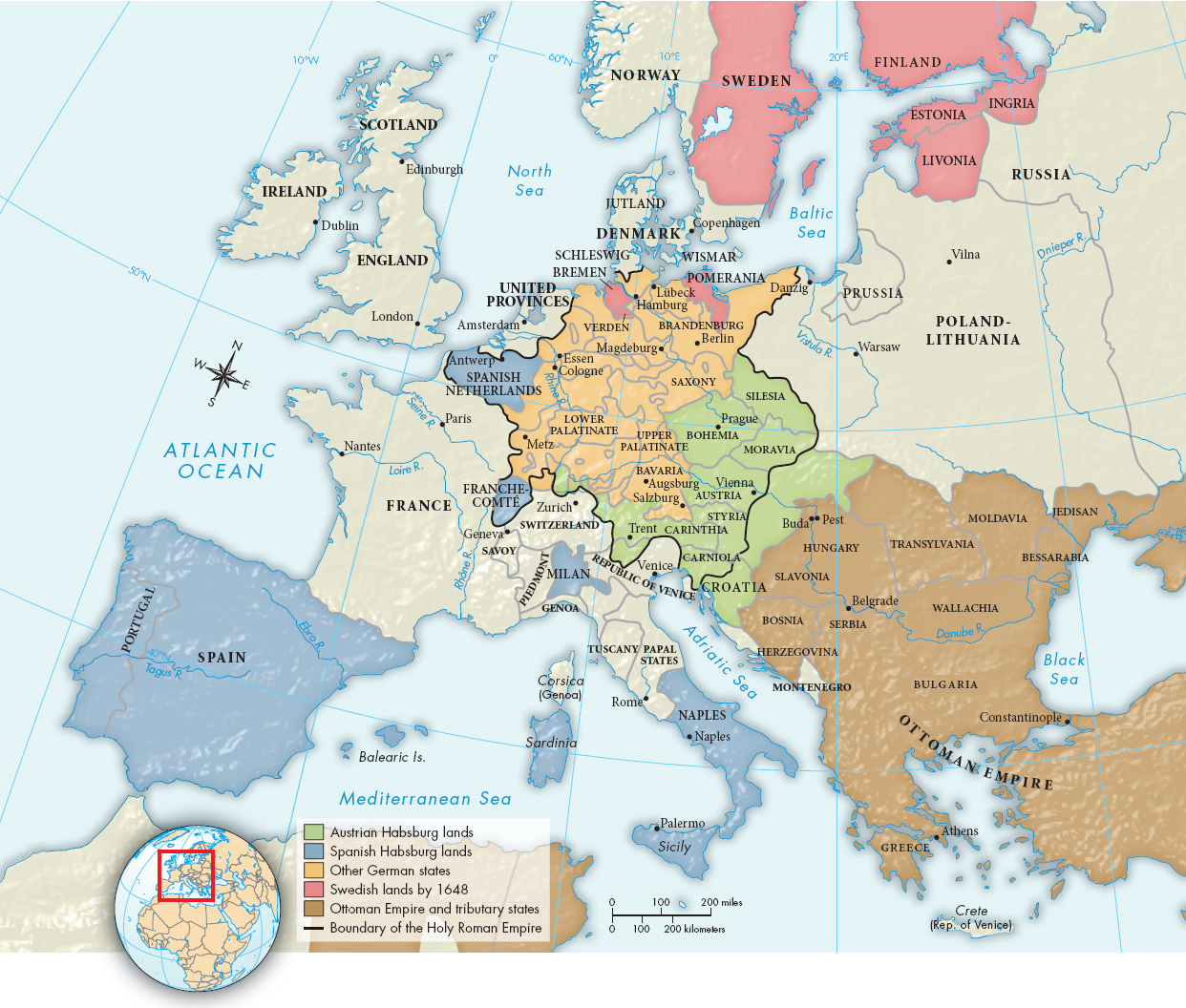The Thirty Years’ War
In the first half of the seventeenth century, the fragile balance of life was violently upturned by the ravages of the Thirty Years’ War (1618–1648). The Holy Roman Empire was a confederation of hundreds of principalities, independent cities, duchies, and other polities loosely united under an elected emperor. The uneasy truce between Catholics and Protestants created by the Peace of Augsburg in 1555 deteriorated as the faiths of various areas shifted. Lutheran princes felt compelled to form the Protestant Union (1608), and Catholics retaliated with the Catholic League (1609). Each alliance was determined that the other should make no religious or territorial advance. Dynastic interests were also involved; the Spanish Habsburgs strongly supported the goals of their Austrian relatives: the unity of the empire and the preservation of Catholicism within it.
The war began in 1618 with the outbreak of civil war in Bohemia between the Catholic League and the Protestant Union. It would continue for three decades, involve an ever-shifting array of alliances, and draw every major European power into the fighting.
- Bohemian Phase (1618–1625) Civil war in Bohemia between the Catholic League and the Protestant Union; Catholic forces defeated Protestants at the Battle of the White Mountain (1620)
|
- Danish Phase (1625–1629) So called because of the leadership of the Protestant king Christian IV of Denmark (r. 1588–1648); witnessed additional Catholic victories; the Catholic imperial army swept through Silesia, north to the Baltic, and east into Pomerania
|
- Swedish Phase (1630–1635) Began with the arrival in Germany of the Swedish king Gustavus Adolphus (r. 1594–1632) and his army in support of the empire’s Protestants; France subsidized the Swedes, hoping to weaken Habsburg power in Europe; Gustavus Adolphus won two important battles but was fatally wounded in combat
|
- French Phase (1635–1648) Prompted by French fears of Habsburg resurgence; France declared war on Spain and sent military as well as financial assistance; peace was finally achieved in October 1648
|
Table 15.2: The Thirty Years War (1618–1648)
The 1648 Peace of Westphalia that ended the Thirty Years’ War marked a turning point in European history. For the most part, conflicts fought over religious faith receded. The treaties recognized the independent authority of more than three hundred German princes (Map 15.1), reconfirming the emperor’s severely limited authority. The Augsburg agreement of 1555 became permanent, adding Calvinism to Catholicism and Lutheranism as legally permissible creeds. The north German states remained Protestant, the south German states Catholic.

MAP 15.1
Europe After the Thirty Years’ WarThis map shows the political division of Europe after the Treaty of Westphalia (1648) ended the war. France emerged as the strongest power in Europe at the end of the Thirty Years’ War. Based on this map, what challenges did the French state still face in dominating Europe after 1648? How does the map represent Swedish gains and Spanish losses in the Treaty of Westphalia?
The Thirty Years’ War was the most destructive event for the central European economy and society prior to the world wars of the twentieth century. Perhaps one-third of urban residents and two-fifths of the rural population died, leaving entire areas depopulated. Trade in southern German cities was virtually destroyed. Agricultural areas suffered catastrophically. Many small farmers lost their land, allowing nobles to enlarge their estates and consolidate their control.1
